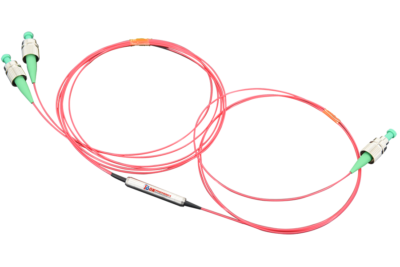In the world of fiber optics and telecommunications, Polarization Maintaining Fused Wavelength Division Multiplexing (PM Fused WDM) stands out as a crucial technology that enables efficient data transmission, offering superior control and accuracy. In this blog, we’ll delve into the fascinating realm of PM Fused WDM, shedding light on its significance and how it shapes the future of optical communication.
What is PM Fused WDM?
Polarization Maintaining Fused WDM is an advanced technology used in the field of optical networking. It’s a key component in the transmission of data through fiber-optic networks, providing a method for multiplexing multiple optical signals of different wavelengths while preserving the polarization state of each signal. In simpler terms, PM Fused WDM allows for the simultaneous transmission of multiple signals with distinct characteristics, maintaining their polarization properties intact.
The Importance of Polarization
Polarization refers to the orientation of the electric field in an electromagnetic wave. In optical communications, it plays a crucial role in signal integrity and quality. When light propagates through optical fibers, it can have different polarization states. Maintaining the polarization of optical signals is essential to prevent signal degradation and ensure high-quality data transmission.
How PM Fused WDM Works
PM Fused WDM devices are designed to multiplex and demultiplex optical signals with specific wavelengths while preserving the polarization state of each signal. This technology achieves this by carefully aligning the optical paths of the different wavelengths and maintaining the correct polarization orientation throughout the process.
The heart of PM Fused WDM technology lies in its ability to combine multiple optical signals onto a single fiber, minimizing signal interference and ensuring that each signal is transmitted with its unique polarization characteristics. By doing so, it enhances the capacity and efficiency of optical networks.
Applications of PM Fused WDM
The applications of PM Fused WDM are diverse and essential in various industries. Some notable applications include:
- Telecommunications: PM Fused WDM is a cornerstone of high-speed data transmission in telecommunications networks, enabling the efficient multiplexing of data over long distances.
- Data Centers: In data centers, PM Fused WDM helps manage the high volume of data traffic, improving network performance and reducing latency.
- Spectroscopy and Sensing: PM Fused WDM is used in scientific research and sensing applications, allowing for the precise multiplexing and demultiplexing of optical signals in experiments and environmental monitoring.
- Medical Imaging: In medical devices such as optical coherence tomography (OCT), PM Fused WDM ensures accurate and high-resolution imaging by preserving polarization during signal transmission.
Advantages of PM Fused WDM
- Signal Integrity: PM Fused WDM preserves the polarization state of optical signals, ensuring that data is transmitted with minimal distortion and signal degradation.
- Efficient Multiplexing: It allows for the simultaneous transmission of multiple signals over a single fiber, increasing network capacity and reducing the need for additional infrastructure.
- Versatility: PM Fused WDM can be tailored to suit specific applications, making it adaptable for a wide range of industries.
Conclusion
Polarization Maintaining Fused Wavelength Division Multiplexing is a fundamental technology that underpins the efficiency and reliability of optical communications. Its ability to maintain the polarization of optical signals while multiplexing them onto a single fiber makes it indispensable in industries like telecommunications, data centers, scientific research, and medical imaging. As our reliance on high-speed data transmission continues to grow, PM Fused WDM will play an even more significant role in shaping the future of optical communication.


Leave A Comment